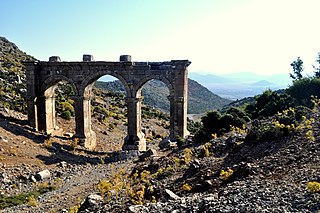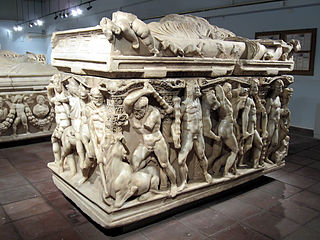 W
WAdada is an ancient city and archaeological site in ancient Pisidia, north of Selge and east of Kestros River, near the village of Sağrak, in Isparta Province’s Sütçüler township. The location was identified as Karabavullu or Karabavli, about 35 km south of Lake Egridir.
 W
WAntioch in Pisidia – alternatively Antiochia in Pisidia or Pisidian Antioch and in Roman Empire, Latin: Antiochia Caesareia or Antiochia Colonia Caesarea – is a city in the Turkish Lakes Region, which is at the crossroads of the Mediterranean, Aegean and Central Anatolian regions, and formerly on the border of Pisidia and Phrygia, hence also known as Antiochia in Phrygia. The site lies approximately 1 km northeast of Yalvaç, the modern town of Isparta Province. The city is on a hill with its highest point of 1236 m in the north.
 W
WAriassus or Ariassos was a town in Pisidia, Asia Minor built on a steep hillside about 50 kilometres inland from Attaleia.
 W
WCremna, or Kremna, was an ancient town in Pisidia. It is situated in the district of Bucak. It stands in a remote valley on a high plateau dominating the ancient Cestrus River, with limited access and good defensive features.
 W
WEtenna was a city in the late Roman province of Pamphylia Prima. Centuries earlier, it was reckoned as belonging to Pisidia, as by Polybius, who wrote that in 218 BC the people of Etenna "who live in the highlands of Pisidia above Side" provided 8000 hoplites to assist the Seleucid usurper Achaeus.
 W
WIsinda was a town of ancient Pisidia.
 W
WLaodicea Combusta or Laodicea, and later known as Claudiolaodicea, was a Hellenistic city in central Anatolia, in the region of Pisidia; its site is currently occupied by Ladik, Konya Province, in Central Anatolia, Turkey.
 W
WLyrbe was a city and episcopal see in the Roman province of Pamphylia Prima and is now a titular see.
 W
WTiberiopolis was a town in the Roman province of Phrygia Pacatiana, mentioned by Ptolemy, Socrates of Constantinople and Hierocles. At various times, it was considered as part of Phrygia, Isauria, and the late Roman province of Pisidia.
 W
WPogla was a town in the late Roman province of Pamphylia Secunda. Its bishopric, which was a suffragan of Perge, is included in the Catholic Church's list of titular sees.
 W
WSagalassos, also known as Selgessos and Sagallesos, is an archaeological site in southwestern Turkey, about 100 km north of Antalya, and 30 km from Burdur and Isparta. The ancient ruins of Sagalassos are 7 km from Ağlasun in the province of Burdur, on Mount Akdağ, in the Western Taurus mountains range, at an altitude of 1450–1700 metres. In Roman Imperial times, the town was known as the "first city of Pisidia", a region in the western Taurus mountains, currently known as the Turkish Lakes Region. During the Hellenistic period it was already one of the major Pisidian towns.
 W
WSeleucia Sidera, also transliterated as Seleuceia, Seleukeia, and later known as Claudioseleucia, Greek Klaudioseleukeia, was an ancient city in the northern part of Pisidia, Anatolia, near the village of Bayat, near Atabey, about 15 km north-northeast of Isparta, Isparta Province, in the Mediterranean Region of Turkey.
 W
WSelge was an important city in ancient Pisidia and later in Pamphylia, on the southern slope of Mount Taurus, modern Antalya Province, Turkey, at the part where the river Eurymedon River forces its way through the mountains towards the south.
 W
WTermessos was a Pisidian city built at an altitude of more than 1000 metres at the south-west side of the mountain Solymos in the Taurus Mountains. It lies 17 kilometres to the north-west of Antalya. It was founded on a natural platform on top of Güllük Dağı, soaring to a height of 1,665 metres from among the surrounding travertine mountains of Antalya.
 W
WTiberiopolis was a town in the Roman province of Phrygia Pacatiana, mentioned by Ptolemy, Socrates of Constantinople and Hierocles. At various times, it was considered as part of Phrygia, Isauria, and the late Roman province of Pisidia.